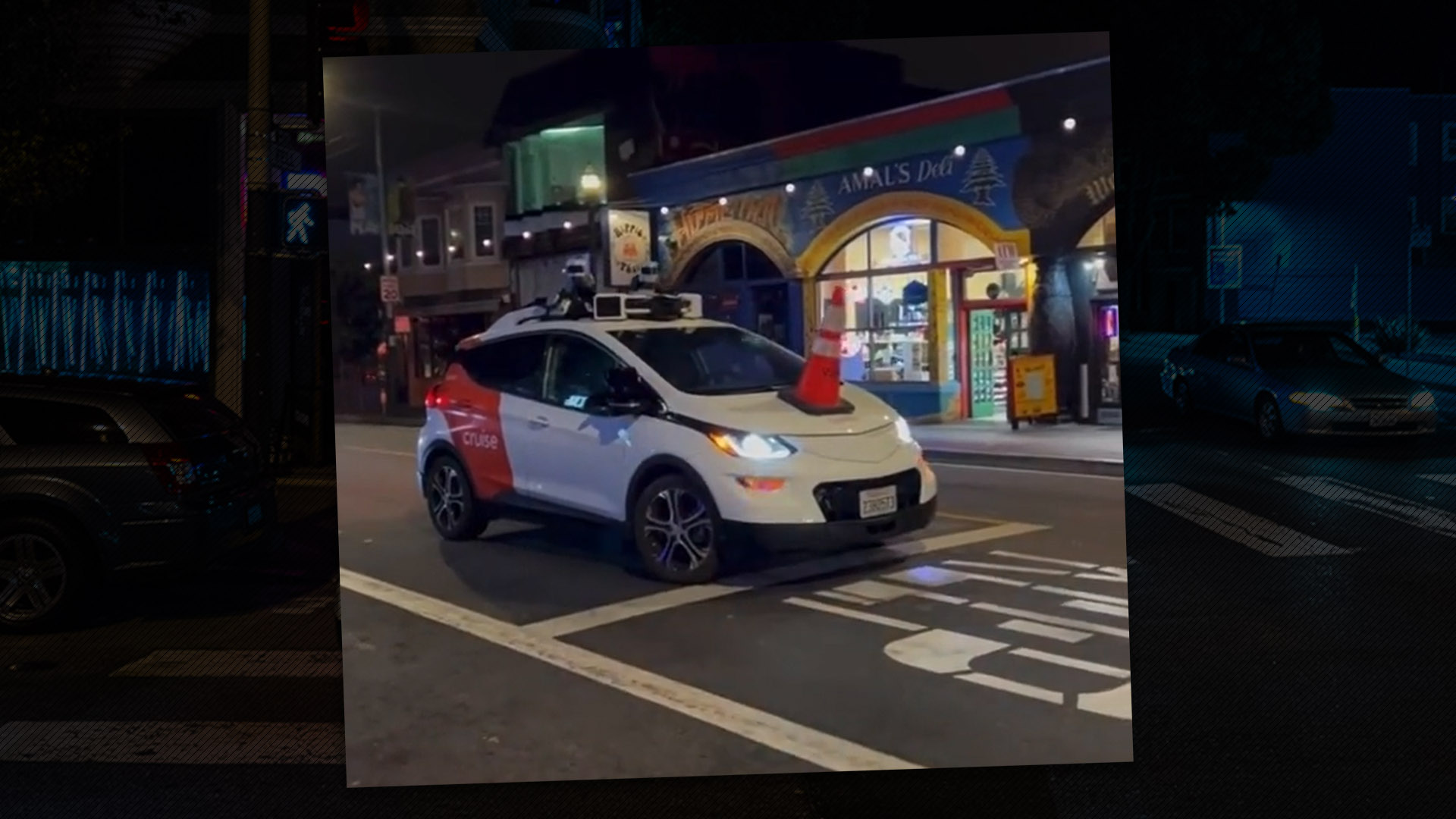

San Francisco has been a hotbed for robotaxis in the U.S. It’s not all that unsurprising that one of the nation’s top tech targets became the go-to testing grounds for these autonomous cars. Over time, however, it has proven to be a bit difficult for locals to cope with the unpredictable nature of these fleets. Now some have chosen an unorthodox method to rebel against the driverless hunks of metal.
A group going by the name “Safe Street Rebel” is fed up with what they perceive to be driverless nuisances. Members have verbally protested against services like Cruise and Waymo from operating in the San Francisco area, but with both companies pushing to further their permitted operating ground, the Safe Street Rebel group has gotten a bit creative with the way that it protests: by disabling the vehicles from driving using traffic cones.
“All you need is a cone and an empty AV,” writes the group on Twitter. “Gently place the cone on the hood—you just created a unicorn and temporary traffic calming!”
Autonomous taxi service Cruise has been under the microscope for some time. In fact, just over a year ago, one of the company’s earliest blunders in California became public. Swarms of company-branded Chevy Bolts became stuck and blocked traffic for hours. It took human drivers to clear the self-induced roadblock. Cruise’s vehicles have also hit downed power lines, rear-ended public buses, and attempted to drive over fire hoses during an emergency. There has been enough public disruption that the National Highway Traffic Safety Administration launched an investigation into the matter.
Cruise’s Google-backed competitor, Waymo, isn’t free from blame either. Videos and reports have emerged of Waymo’s vehicles getting stuck on dead-end streets and being unable to adhere to commands when pulled over by police. But whether or not Waymo’s driverless taxis are as guilty as Safe Street Rebel says they are, the Google subsidiary isn’t happy about the group’s actions. In a statement to The Drive, Waymo said that “Not only is this understanding of how AVs operate incorrect, but this is vandalism and encourages unsafe and disrespectful behavior on our roadways. We will notify law enforcement of any unwanted or unsafe interference of our vehicles on public roadways.”

Despite the press and pushback from local officials, Cruise and Waymo want to expand past their physical boundaries and venture into 24/7 operation. The California Public Utilities Commission (CPUC), which regulates the operation of Robotaxis statewide, plan to vote on this expansion next week. Should the CPUC vote to allow AVs to expand their operations, city officials may be left with no option other than to keep records of when incidents happen and complain, hoping that someone will listen and take action before a disaster happens.
This has led the members of Safe Street Rebel to take matters into their own hands. They are raising further awareness of their cause while disabling Cruise and Waymo vehicles with a simple traffic cone.
“Hell no,” said the group in a TikTok video. “We do not consent to this.”

The group argues that robotaxis are not just bad for San Francisco traffic, but they aren’t sustainable from an environmental standpoint. Specifically, they call out the emissions associated with manufacturing the electric Chevy Bolts’ batteries, as well as tire wear particulate emissions from each car, which could be a legitimate concern according to some independent studies.
Although it’s no secret that some of these robotaxis have caused issues with local traffic patterns, not everyone is necessarily anti-autonomy. In fact, some people even shamed the cone-placers in Twitter comments, calling the movement a “strange, anti-progress agenda.”
The group appears to have other issues with AVs outside of just the vehicles being allowed to operate on more roads during longer periods of time. It would seem that their mission is for California to instead spend its money on bolstering the public transit infrastructure, namely trains, instead of sinking it into enabling AVs to roam the streets. This aligns with their statement that “all cars are bad” regardless of who is (or isn’t) behind the wheel. So take what they say with a grain of salt.
AV companies have countered this argument in the past by claiming that their tech is saving lives. Meanwhile, locals, city officials, and local emergency services are seemingly annoyed by the fast-paced rollout. And as for the CPUC? Well, it says that it is “actively working” to put policies in place to monitor driverless tech in the state.
The agency will vote on whether or not to allow AV companies to expand their services on July 13th.
Got a tip or question for the author? Contact them directly: rob@thedrive.com